Rain Watch: Monsoon picks up steady pace, water reservoir levels still low
Forbes India presents a weekly series Rain Watch where we simplify rainfall status, water reservoir levels and sowing pattern of kharif crops data analysis by Barclays
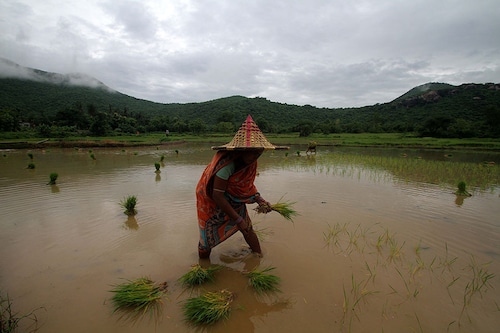

Following a slow start, monsoon rainfall has gathered pace in the first week of July. So far, normal rainfall is at 2 percent, which is above the long-period average (LPA) till 9 July, shows Indian Meteorological Department (IMD) data. Monsoon rainfall within plus or minus 10 percent of the LPA is classified as “normal" by IMD. In July, it expects rainfall to be “most probably within positive side of the normal", with “normal" to “above normal" rainfall likely over central India, southern peninsular and eastern India. The skewed nature of the rainfall distribution is improving, while the number of subdivisions facing “large deficient rainfall" is declining by the week, shows IMD data analysis by Barclays.
IMD has said there are chances of light and moderate fairly widespread to widespread rainfall with isolated heavy to very heavy rainfall over Uttarakhand, east Rajasthan and Uttar Pradesh during the next five days. “Monsoon trough is active with its western end to the south of its normal position and eastern end to the north of its normal position," the forecaster said.

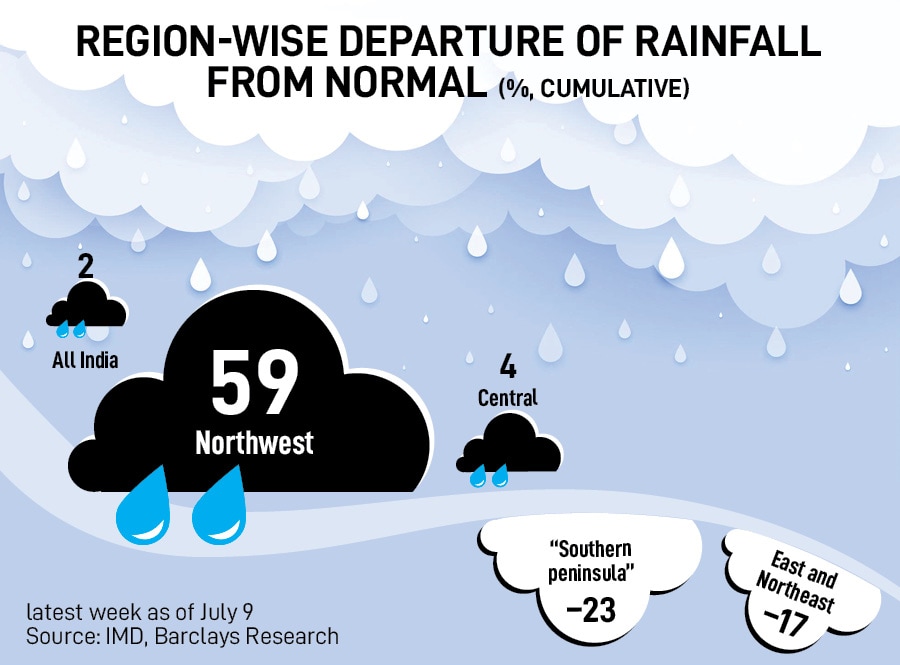
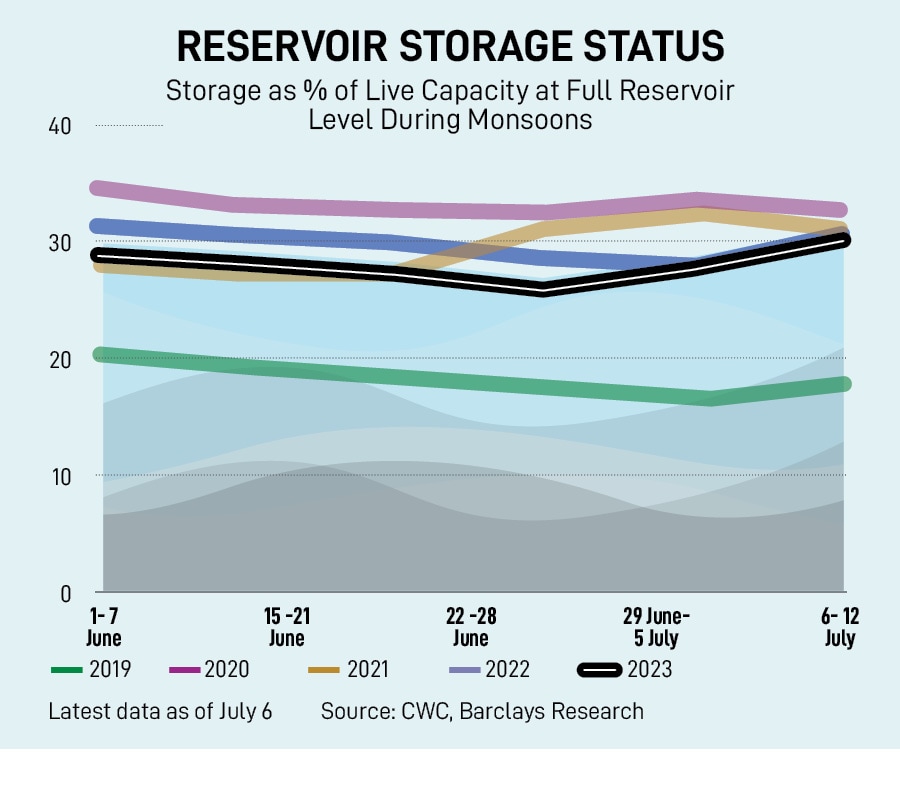
According to the Central Water Commission (CWC), as of July 6, storage in key reservoirs was about 29 percent of total capacity, slightly higher than 27 percent recorded last week. This amounts to 96 percent of the available capacity in the year-earlier period and 110 percent of the 10-year average for this point in the season.
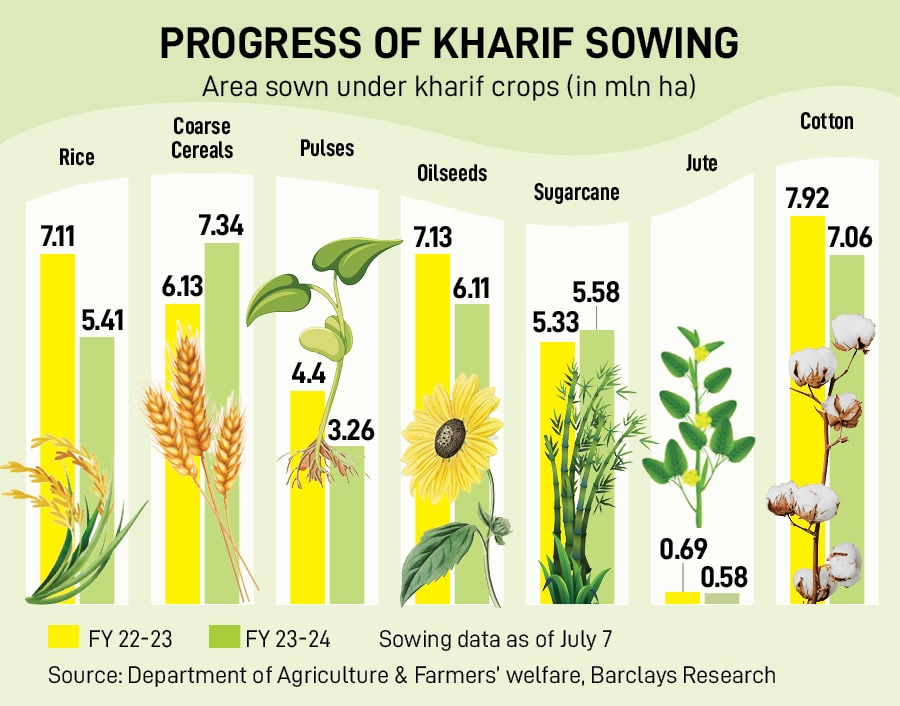
The total area sown till July 7 was 35.34 million hectare. For major kharif crops like rice, pulses, oil seeds and cotton, area sown is lower year-on-year, while it is higher for sugarcane and coarse cereals. The relatively low area sown for rice and cotton partially reflects deficient rainfall in a few of the major crop-growing states (West Bengal, Maharashtra, Karnataka, Telangana).
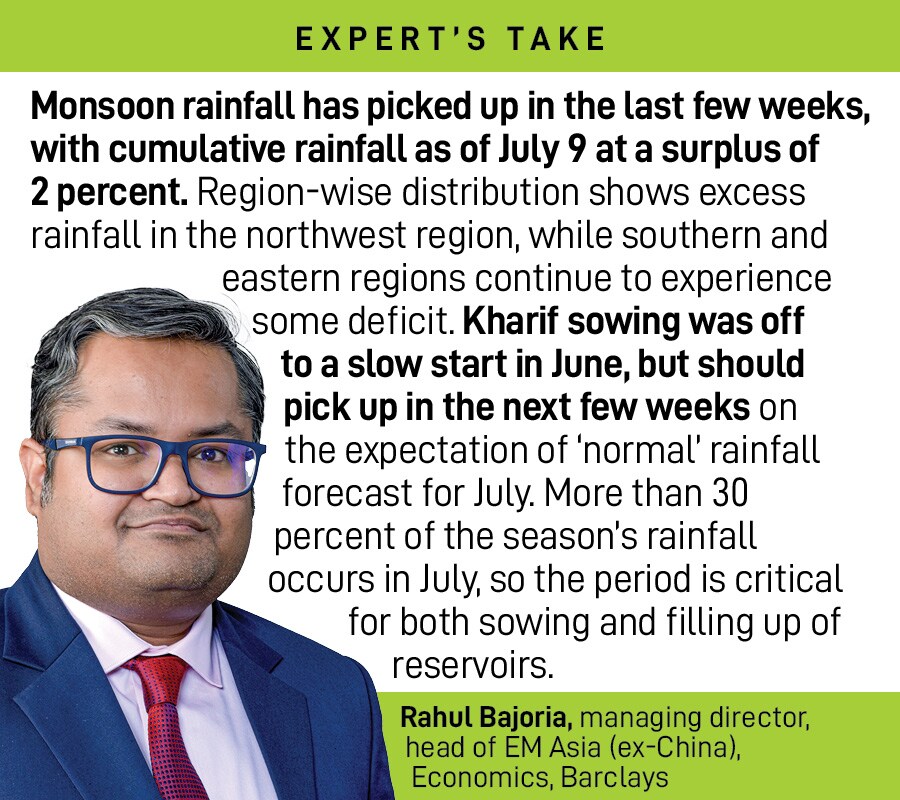
Infographics: Kapil Kashyap
First Published: Jul 11, 2023, 14:14
Subscribe Now